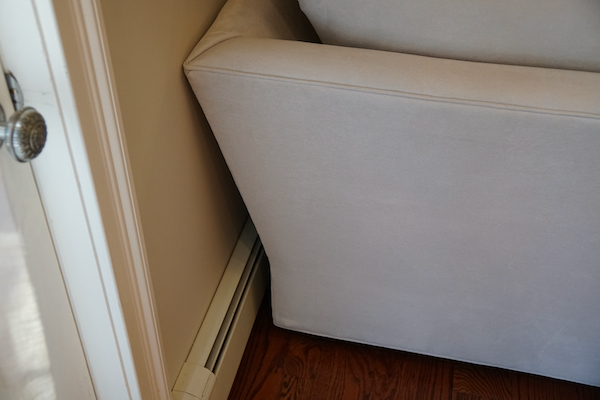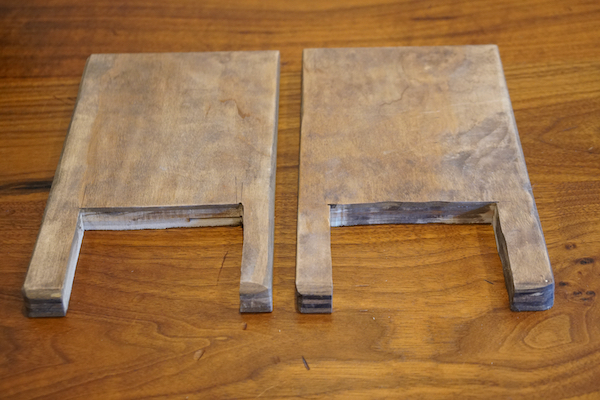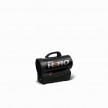Keep Couch Off Baseboard Heater
Save Heating Costs and Shorten Warm Up Times With A Couch Stand-Off Jig
Here’s a jig you can make to keep couch off baseboard heater and increase baseboard heating efficiency in your house.
Pushing a couch up against a wall with a baseboard heater can restrict airflow, which causes the heater to function inefficiently, take longer to heat the room and waste energy.
Placing Furniture Along Radiator Walls
Baseboard heaters run horizontally along many exterior walls. It’s almost impossible to place furniture in a room without blocking some portion of baseboard heaters.
Hot Water Baseboard Heat
Hot water baseboard heating systems depend on air flowing through the numerous aluminum convector fins that surround a copper pipe.
Cool air enters from underneath the fins and is warmed, as it rises and circulates into the room.
Because of the heater’s location at the floor level, it creates a continuous circulation that provides natural, continuous heat as long as nothing is blocking it.
Couch Stand-Off Jig – Keep Couch Off Baseboard Heater
I made a Stand-Off Jig To Keep Furniture Off The Wall
You can make this jog larger if you’d like more space.
Sizing The Stand-Off Jig
To determine the size of your standoff jig, you need to position your couch so that it sits 1-2” off the wall. Once you have the couch in position, measure the distance from the wall [directly below the heater] to the couch leg.
I used some scrap ¾” plywood and cut it to approximately 6-inches wide by 10-inches long.
This allowed me to cut a 1-inch deep notch to cradle the couch leg. I made the notch 3-inches wide to accommodate future couch legs and shapes. The notch cradles the couch leg and ensures that the standoff will be not be displaced if hit by a vacuum of if someone bumps or jumps on the couch.
Warning with Electric Base Board Heaters
Most electric baseboard heaters operate on 240-volt power and can get hot. Blocking them with furniture can cause them to overheat and create a possible fire hazard. This jig can help with that!
I also want to mention that you need to keep the baseboard heaters fins clean.
Keep Radiator Fins Clean and Clear
Baseboard heaters have fins and operate best when air flows freely through the fins. If the air is obstructed, either from dust buildup or from something covering [carpet, drapes, etc] the top or bottom of the heating units, the units will not heat effectively.
Keeping the fins clean increases heating efficiency, additionally, baseboard heat radiators should be cleaned at least once a year, and more often if you have dogs or cats. Learn how to clean your baseboard radiator fins.














